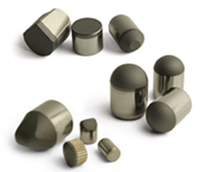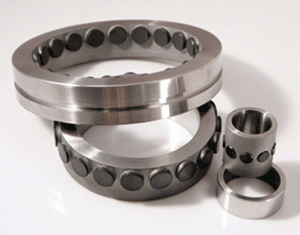Unique ultrahard Powder Metallurgy bearings for tidal electricity generation
The company’s bearing division recently embarked on US Department of Energy (DoE) funded research within the ‘renewable energy program’ to develop applications for its ultrahard sintered diamond bearings used in marine hydrokinetic energy turbines. In this article Bernard Williams reports on the key objectives of the project and highlights some of the key elements of the unique process to produce the bearings.
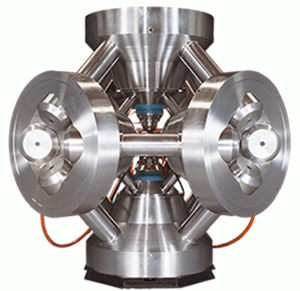
Fig.1 The high pressure, high temperature cubic press
developed by US Synthetic is used to produce the
sintered diamond and tungsten carbide composite
known in the industry as a polycrystalline diamond
cutter (PDC). Courtesy US Synthetic Corp.
US Synthetic Corp has reported that its bearing division will use the $186,000 research funding received from the U.S. Department of Energy to investigate whether polycrystalline diamond (PCD) thrust bearings made by its unique PM diamond sintering process will have wide spread potential applications in underwater turbine generators.
The company will specifically undertake research to measure the effects of a seawater environment on a variety of sintered diamond thrust bearings, using its own qualified technicians, at its test facility in Orem, Utah. The company will also consult with Professor Michael Khonsari at Louisiana State University. The marine hydrokinetic (MHK) energy generators will be produced by New Energy Corp, based in Calgary, Alberta, Canada. New Energy is one of the few companies in the world which produces a ‘water-to-wire’ hydrokinetic power systems. The tests are expected to last one year.
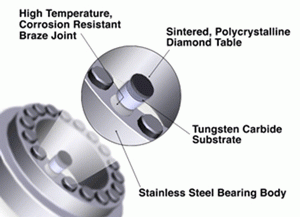
Fig.2 Polycrystalline Diamond (PCD) thrust bearings
are made from PCD inserts on a WC substrate and
assembled (usually by brazing) in stainless steel
carrier rings. Photo courtesy US Synthetic Bearings
MHK energy machines rely on underwater river or seawater tidal currents to spin turbines, thereby creating electricity. This technology is still mostly experimental with only a few commercial installations existing in North America and Europe. New Energy Corp. states that a major obstacle with MHK technology is inadequate bearing technology in hostile environments. If thrust bearings can be developed capable of operating with variable loads without bearing failure, with minimum or little maintenance, with frequent starts and stops, and working in harsh seawater environment including using seawater as the lubricant, then MHK machines should become an economically viable and sustainable renewable energy source.
The PCD bearings developed by US Synthetic are said to have the potential to overcome the above challenges since a MHK with PCD bearings has no seals, can accommodate variable loads from tides without bearing failure, and cannot contaminate the seawater with oil because seawater is the bearing lubricant.
“We believe synthetic diamond has tremendous potential as an engineering material,” said Craig Cooley, General Manager of US Synthetic Bearings. “We hope that demonstrating the effectiveness of PCD bearings in MHKs will expose other members of the scientific and engineering community to the advantages of using this material. Synthetic diamond is key where hardness, thermal conductivity, strength, toughness, and abrasion resistance are required.’’
US Synthetic was originally founded in 1978 by Louis Pope, who is still the company’s CEO, as a small diamond powder/grit manufacturer. In the early years the company focused on developing its innovative cubic press technology for high pressure, high temperature diamond synthesis from graphite, and later used its proprietary process to also manufacture PCD tools. Over the past 10 years the US Synthetic Bearing division has developed diamond-enhanced bearings which have been approved for mission-critical downhole components in the oil and gas drilling industry.
Overcoming the shortcomings of single crystal diamond
The company states that individual diamond crystals cleave quite easily when struck parallel to certain planes. As a result, individual diamond crystals do not make good cutting tools—unless they are meticulously oriented. Diamond sintering overcomes the problem of weak planes in diamond gemstones by bonding a mass of small diamond particles onto a larger, coherent structure.
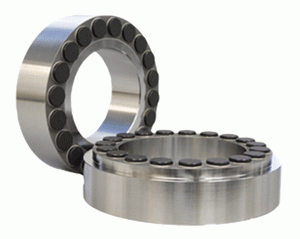
Fig.4 PCD bearing produced by US Synthetic
Bearings for thrust loading as would be used in
marine hydroelectric energy (MHK) machines
The sintered diamond structure provides greater toughness and durability than single diamond crystals because the individual crystals in a sintered body are randomly oriented. This prevents cracks from propagating along the weak planes where traditional diamond crystals cleave most easily. Sintered diamonds also provide more uniform wear than a single crystal, while maintaining similar thermal conductivity and hardness properties. All of these factors combine to make sintered diamond an ideal material for both cutting tools and bearing applications.
The bearings are made at US Synthetic by placing diamond grit or diamond powder ranging between 2 μm-70 μm particle size next to a tungsten carbide substrate. The thickness of the diamond surface layer will depend on application requirements. This is then placed in a proprietary, high pressure cubic press which consists of six large pistons with each piston pushing on a small tungsten carbide anvil. This in turn compresses a cubic pressure cell containing the raw materials – carbide and diamond crystals.
When the press is subject to high pressure of around 1 million psi (60 kbar), and high temperature of around 1400°C, the cobalt in the tungsten carbide substrate becomes liquid and flows around the diamond grains, facilitating the diamond grain growth. When the temperature and pressure are back to normal, the produced tungsten carbide/PCD inserts can be placed in a stainless steel carrier ring if used in a bearing application.
Whilst in the past US Synthetic used to make its own diamond powder from graphite, it now sources it from China and other parts of Asia. Over the years, the company has also developed specialised techniques and machines for lapping, grinding, polishing, brazing, and cutting the PDC inserts to exacting specifications, despite the inherent challenges of machining sintered diamond.
The company says that the bearings made of sintered diamond powder are tougher than single crystal diamonds because there is no risk of fracture. The cobalt and the tungsten carbide also improve the hardness and make it possible to attach the PCD to the stainless steel ring by brazing. The bearings are said to have some improvements over stainless steel bearings, due to their low friction coefficient in air, water and oil, and high load capacities.
As a result, sintered diamond bearings have been finding applications in oil and gas drilling tools, pumps, PCD cutting tools used for machining metals, wire drawing dies, and for mining applications. Tests on the use of PCD thrust bearings in hydrokinetic energy and tidal turbines will take about one year to complete but indications are that this application will also be successful.
www.ussbearings.com
www.newenergycorp.ca
News | Articles | Market reviews | Search directory | Subscribe to e-newsletter
Published on www.ipmd.net
News, articles and a fully searchable directory for the powder metallurgy industry



